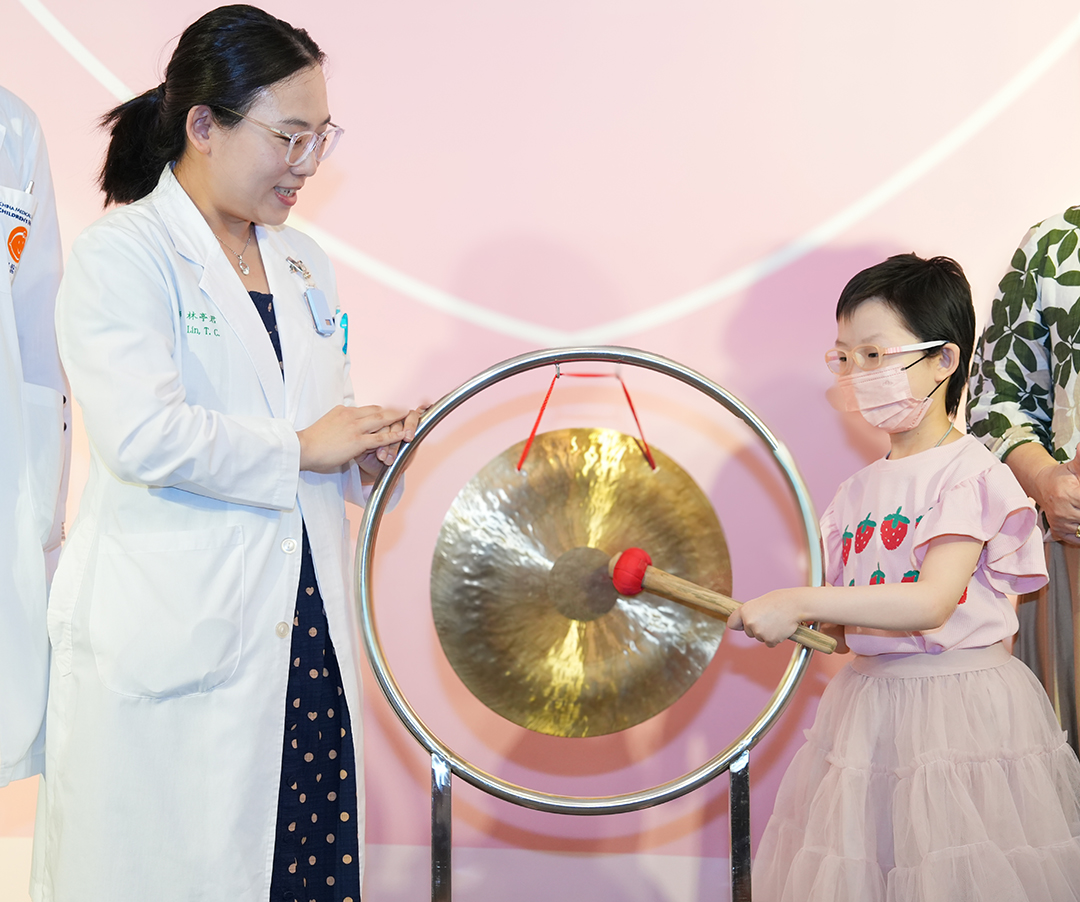News and Award
About CMUH
CMUH’s Precision Proton Therapy Gives Hope to Pediatric Cancer Patients: Advanced Technology and Compassion Illuminate a Path to Recovery
CMUH’s Precision Proton Therapy Gives Hope to Pediatric Cancer Patients:
Advanced Technology and Compassion Illuminate a Path to Recovery
When cancer silently strikes a young life, every step of treatment becomes an arduous journey—a marathon against time and adversity. Six-year-old Chen, a young girl diagnosed with neuroblastoma with multiple metastases, received three weeks of continuous proton therapy at China Medical University Hospital (CMUH). Her tumors are now under control, her condition stabilized, and she is currently undergoing follow-up immunotherapy. Compared to conventional radiation therapy, proton therapy offers precise tumor targeting and fewer side effects, making it especially suitable for children in their developmental years. At CMUH, a dedicated team combines advanced technology with genuine compassion, lighting the way toward restored health for pediatric patients.
(1).jpeg)
At age six, Chen began limping after a fall that injured her right knee. Despite multiple consultations, her symptoms persisted, eventually bringing her to CMUH's Children's Hospital. She was referred from pediatric neurology to Dr. Teng-Yang Yu, attending physician of the Department of Pediatric Hematology and Oncology. After a series of imaging and biopsy examinations, Chen was diagnosed with neuroblastoma with extensive brain and bone metastases, requiring a complex treatment plan involving chemotherapy, surgery, stem cell transplantation, radiation, and immunotherapy—an extraordinary challenge for a young child.
Dr. Teng-Yang Yu explained that neuroblastoma is a malignant tumor originating from neural crest cells. According to the 2023 Taiwan Childhood Cancer Foundation report, 25 children under the age of 18 were diagnosed with neuroblastoma, making it one of the most common pediatric cancers in Taiwan. Symptoms often include abdominal masses, pain, respiratory distress, or neurological issues due to spinal involvement. Children with metastases frequently present with fever, bone pain, and weight loss. The symptoms are typically non-specific, making diagnosis particularly challenging.
Director of the Department of Radiation Oncology, Dr. Ji-An Liang, noted that Chen's grandmother was concerned about the potential impact of traditional radiation on her granddaughter's future height and endocrine development. On the medical team’s recommendation, they chose proton therapy, which minimizes side effects. Proton therapy's unique physical properties allow for precise energy delivery to the tumor, sparing surrounding healthy tissue and significantly reducing the risks of growth retardation, endocrine disorders, and secondary cancers.
Throughout the three-week course of treatment, Chen was required to remain still for long periods each day. To help her adapt, the proton therapy team arranged practice sessions and facility tours before treatment, and played her favorite music and stories during therapy. Thanks to these efforts, Chen completed all treatments without anesthesia—courageous and highly cooperative, leaving a lasting impression on the medical staff.
Attending physician Dr. Ting-Chun Lin shared that she herself was pregnant during Chen's treatment. Reflecting on her proton therapy training in Pennsylvania, Dr. Lin recalled local pediatric oncologists admitting that doctors with young children rarely take on pediatric cancer cases due to the psychological toll. She emphasized that, beyond comprehensive medical care, it is essential to deeply understand and support the emotional needs of patients and their families.

Dr. K. S. Clifford Chao, Director of the Proton Therapy Center, highlighted that CMUH launched Central Taiwan's first proton therapy center in July 2024, enabling Chen to receive Varian ProBeam® 360 proton therapy close to home—eliminating the need for lengthy travel. This advancement not only elevates the standard of cancer care in central Taiwan but also provides children with the best possible treatment options. The value of proton therapy lies not only in tumor control but in safeguarding every possibility for a child's growth and future. For these children, the future is no longer just a distant dream, but a tangible reality within reach.



![[Taiwan–Malaysia Medical Innovation Forum] CMUH and UNIMAS Co-Host Major Medical Symposium to Advance Medical Technology and Precision Patient Care img](/FileUploads/News/20250714_131324.jpg?w=250&h=180&mode=crop&scale=both)